Generic letter of resignation template
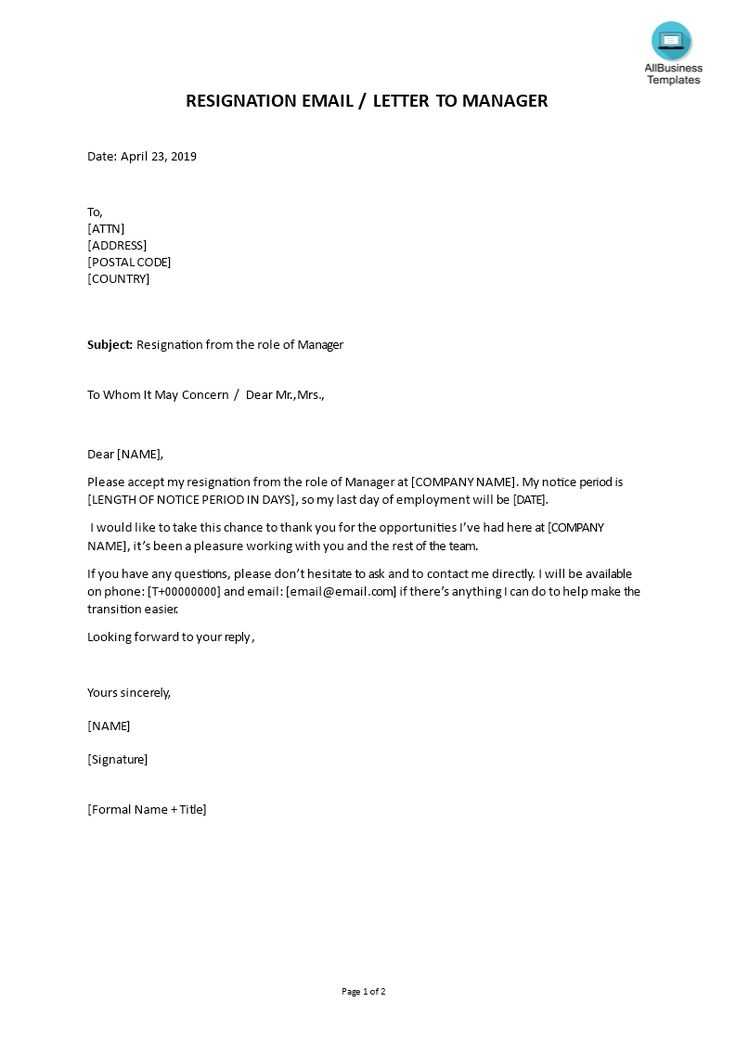
If you’re ready to resign from your position, it’s important to submit a professional letter that clearly communicates your decision. A resignation letter should be concise, polite, and to the point, while maintaining respect for your employer and colleagues. Here’s a basic template that covers the necessary elements to craft your own resignation letter.
Step 1: Start by addressing your supervisor or manager. Use a formal greeting, such as “Dear [Manager’s Name],”. It’s a simple yet courteous way to begin your letter.
Step 2: Clearly state your intention to resign. Mention the exact date of your resignation to avoid any confusion. For example, “I am writing to formally resign from my position as [Job Title] effective [Resignation Date].” This ensures that your employer knows exactly when you plan to leave.
Step 3: Express gratitude for the opportunities you’ve had at the company. It’s always a good idea to thank your employer for the experience, even if you’re moving on to new opportunities. Something like, “I appreciate the opportunity to have worked with such a dedicated team,” conveys respect for the time spent in the role.
Step 4: Offer assistance during the transition period. You can mention your willingness to help train a replacement or assist with wrapping up your tasks. An example: “I am happy to assist in making the transition as smooth as possible and will ensure that all my responsibilities are up to date before my departure.”
Step 5: Close your letter by reaffirming your gratitude and offering your best wishes. A polite ending, such as “Thank you again for the opportunity, and I wish the team continued success,” shows professionalism and leaves a positive impression.
Here’s the revised version where words do not repeat more than 2-3 times:
In this version, the letter is direct and to the point, keeping it professional and courteous. Avoid using phrases like “I would like to” repeatedly. Focus on clarity instead of redundancy. Start by stating your intention clearly, then express gratitude for the opportunities provided. Finish by offering to assist with the transition process.
For example:
Dear [Manager’s Name],
I am writing to formally resign from my position at [Company Name], effective [Last Working Day]. I appreciate the opportunity to have worked with such a dedicated team and learned from the experiences here. Please let me know how I can help ensure a smooth transition.
Thank you again for your support. I look forward to staying in touch.
Sincerely,
[Your Name]
- Generic Resignation Letter Template
Start your resignation letter with a clear and straightforward statement. Mention the position you are resigning from and the date you plan to leave. This sets the tone and ensures your intentions are clearly communicated.
Letter Example:
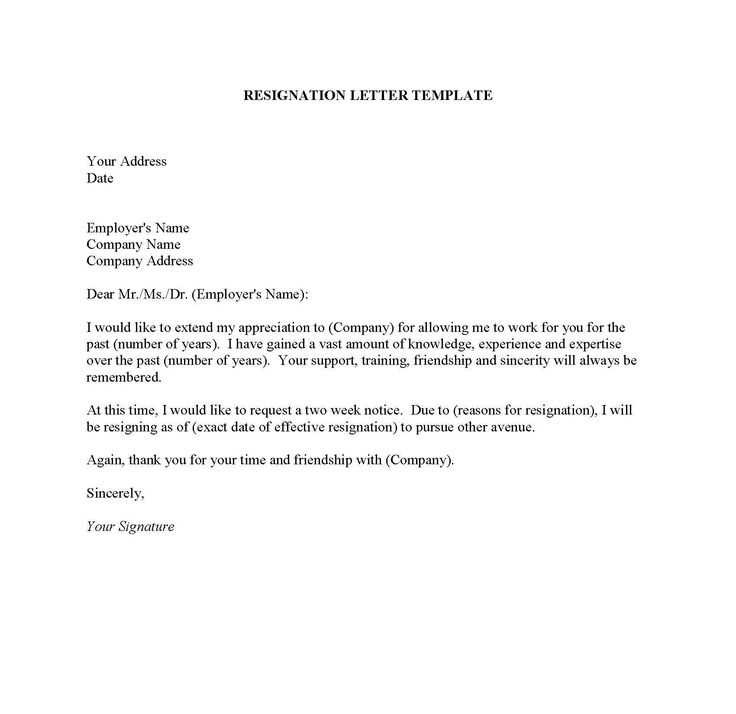
Dear [Manager’s Name],
I am writing to formally resign from my position as [Your Job Title] at [Company Name], effective [Last Working Day].
Key Elements to Include:
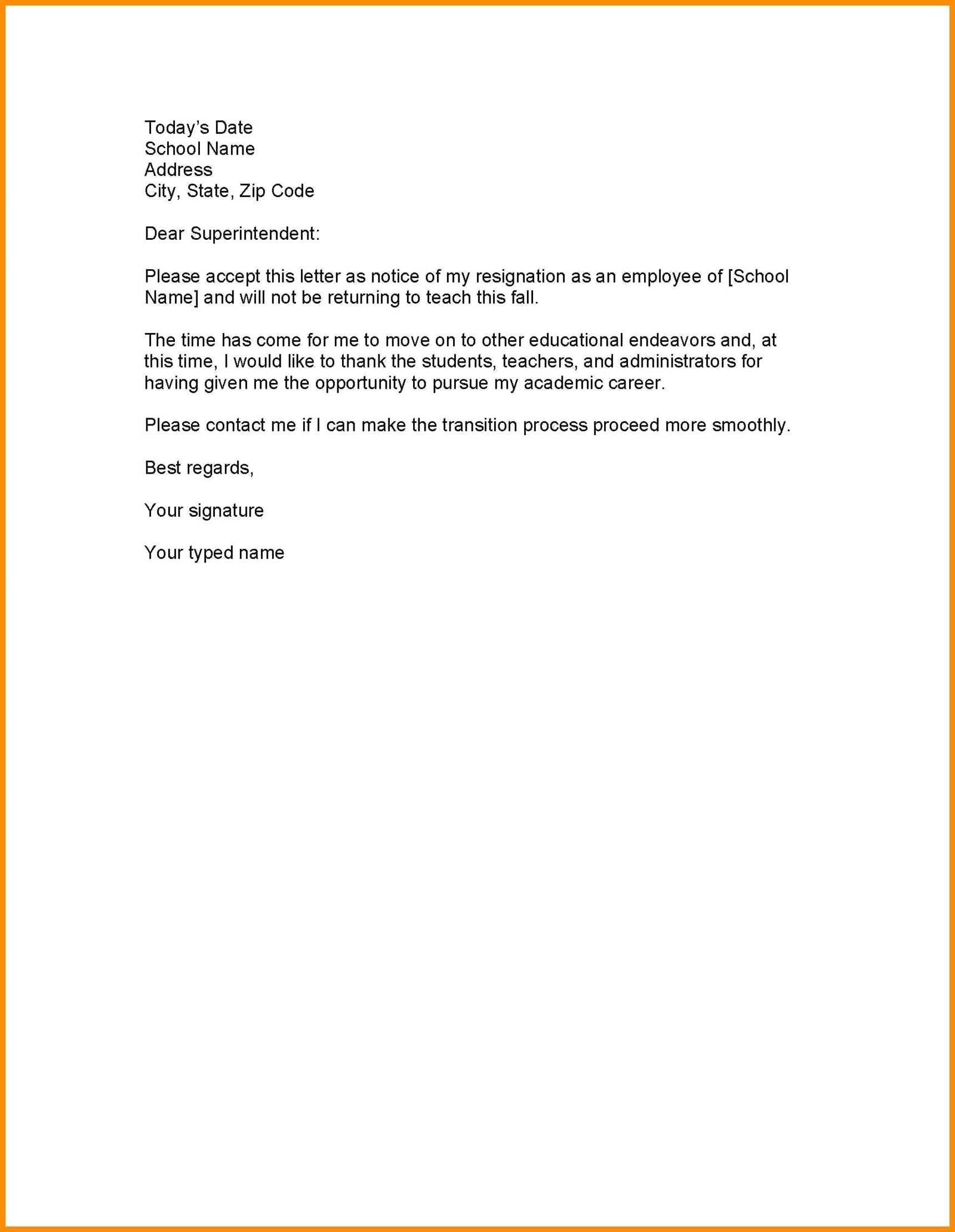
- Subject Line: Keep it clear: “Resignation Letter – [Your Name]”
- Introduction: State the purpose of the letter and your resignation date.
- Reason for Resignation: You may choose to briefly mention your reason, but keep it professional.
- Gratitude: Acknowledge any positive experiences you had with the company.
- Offer to Help with Transition: Offer to assist with a smooth handover of your responsibilities.
- Closing: End with a polite, professional closing, such as “Sincerely” or “Best Regards”.
Customize the template to suit your situation and maintain professionalism throughout.
Begin your resignation letter by addressing your employer or supervisor directly. Use a formal greeting, such as “Dear [Supervisor’s Name],” to set a respectful tone.
1. Start with a Clear Statement of Resignation
State your intention to resign right away. Be specific about your resignation and include your official last working day. A concise statement such as, “I am writing to formally resign from my position as [Your Position], effective [Date],” works well.
2. Express Gratitude
Even if your experience wasn’t ideal, keep this part professional. Show appreciation for the opportunities you had. A simple line like, “I appreciate the opportunity to work with [Company Name] and the experiences I’ve gained” will suffice.
3. Offer Assistance in the Transition
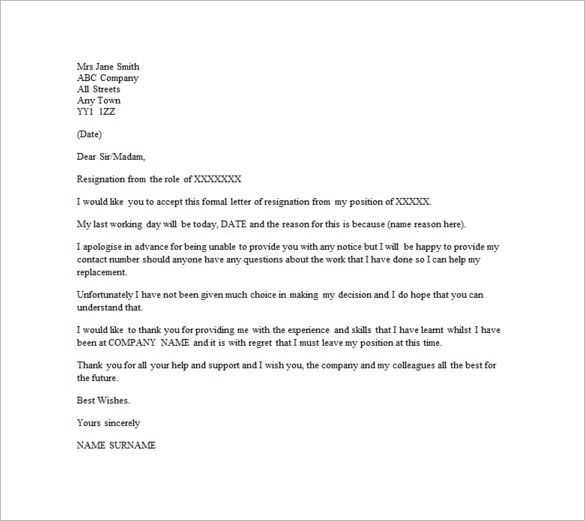
Let your employer know you’re willing to help with the transition process. A line like “I am happy to assist in training a replacement or ensuring a smooth handover of my responsibilities” demonstrates professionalism and goodwill.
4. Close on a Positive Note
Finish the letter by wishing the company and your colleagues the best. This leaves a positive final impression. A polite closing line such as, “I wish the company continued success in the future” works well.
5. Signature
Sign off the letter formally with “Sincerely” followed by your name. Include your position and contact information if necessary.
Sample Resignation Letter Structure
| Section | Example |
|---|---|
| Opening | Dear [Supervisor’s Name], |
| Resignation Statement | I am writing to formally resign from my position as [Your Position], effective [Date]. |
| Gratitude | I appreciate the opportunity to work with [Company Name] and the experiences I’ve gained. |
| Offer Assistance | I am happy to assist in training a replacement or ensuring a smooth handover of my responsibilities. |
| Closing | I wish the company continued success in the future. |
| Signature | Sincerely, [Your Name] |
State your intention to resign clearly, including your last working day. This provides the company with a clear timeframe to plan for your departure.
Express gratitude for the opportunities and experiences you gained during your time with the company. Acknowledge positive aspects of your role or colleagues without over-explaining.
Offer assistance in the transition process, such as training a replacement or completing outstanding tasks. This demonstrates professionalism and leaves a positive impression.
Maintain a tone of professionalism and respect, even if you are leaving due to negative reasons. Avoid airing grievances or discussing personal matters in the letter.
End on a positive note by wishing the company success in the future. This leaves the door open for potential future opportunities and keeps relationships intact.
Choose a formal resignation letter when you want to maintain professionalism and leave a positive impression, especially if you’re in a corporate environment or have a longstanding relationship with your employer. This style ensures clarity, respect, and upholds a positive reference for future opportunities.
When to Use a Formal Resignation
- Corporate settings or large companies
- When you plan to request a reference letter
- If you need to preserve professional relationships
- For roles that involve senior positions or responsibility
When to Use an Informal Resignation
- Casual work environments or small businesses
- If you’re on friendly terms with your employer
- For short-term positions or internships
- When you feel a more casual approach is suitable
Consider your relationship with the company and your future career goals when deciding on the tone of your resignation letter.
Start with clarity. Avoid vague statements about your reasons for leaving. Be direct, but respectful. Over-explaining your decision may lead to unnecessary details, so keep it concise. Don’t include personal grievances or negativity about your experience at the company. Even if your exit is due to a challenging situation, maintain professionalism.
Avoid Negative Language
Refrain from blaming or criticizing your employer, coworkers, or the company. Negative language leaves a lasting impression and may harm your professional reputation. Instead, express gratitude for the opportunities you had, focusing on the positive aspects of your time with the company.
Don’t Forget Key Details
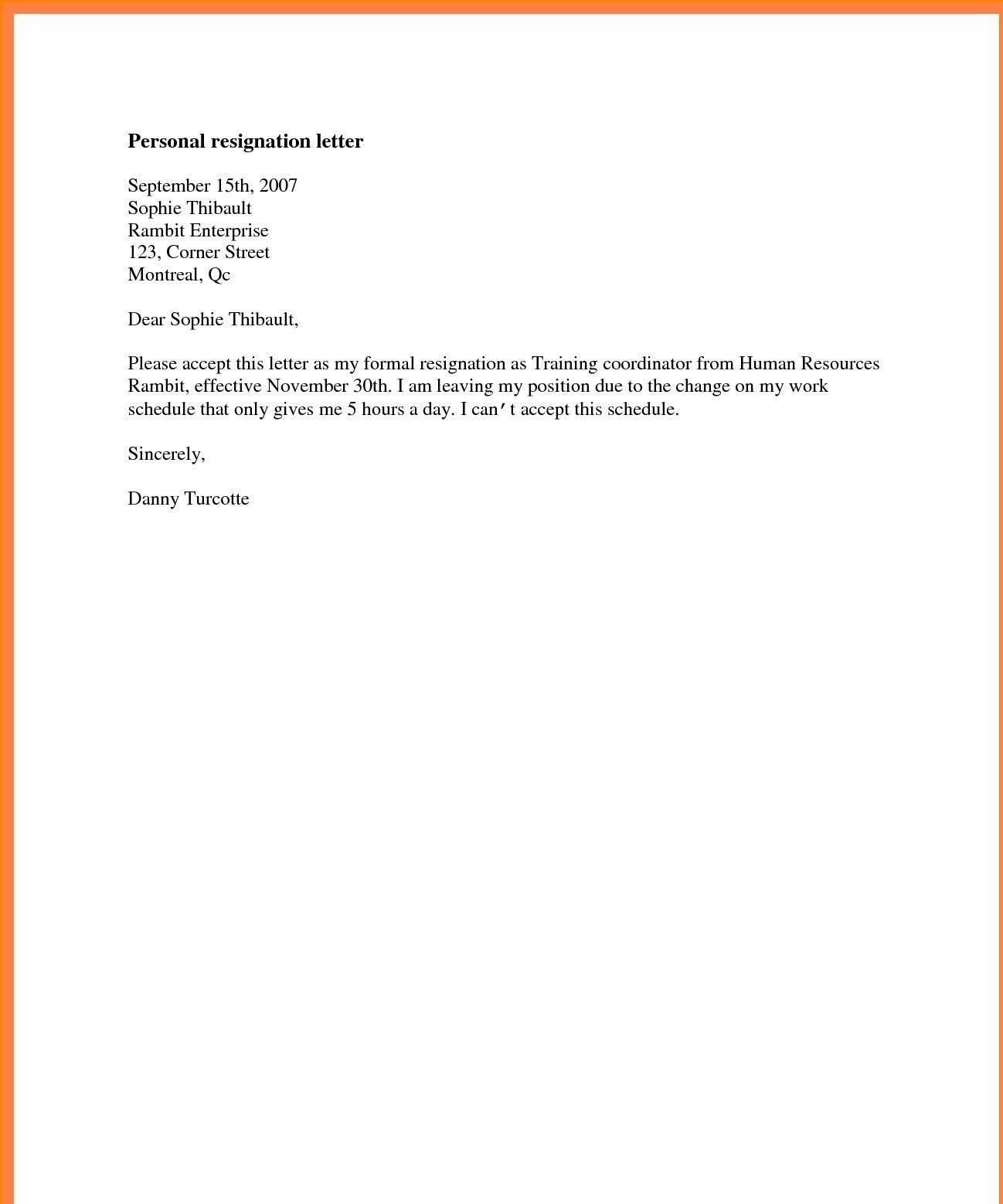
Clearly mention your last working day. This provides your employer with a clear timeline and helps both parties plan for a smooth transition. Forgetting this crucial detail can create confusion and disrupt the process.
Be direct and clear when informing your employer about your resignation. Craft a formal email or letter, stating your intent to leave and the effective date of your departure. Avoid any unnecessary details or explanations that may detract from the core message.
Keep it Short and Straightforward
Your resignation notice should be concise. Start by thanking your employer for the opportunity and briefly explain your reason for leaving, if you feel comfortable doing so. Keep the tone respectful and professional. End by offering assistance with the transition, if possible.
Deliver the News Personally
Whenever feasible, notify your employer in person or via a video call before submitting your written resignation. This allows for a more respectful and transparent conversation. If an in-person meeting is not possible, a phone call is the next best option.
Ensure your resignation letter is free from errors, and take care to maintain professionalism throughout. Your goal is to leave on good terms, preserving your reputation for future opportunities.
Submit your resignation letter with clear and concise language. Keep it professional by avoiding any negative comments about the company or colleagues. Maintain a neutral tone throughout the letter to ensure a respectful departure.
Notify Your Manager First
Always inform your direct supervisor before sharing your decision with others. This shows professionalism and respect for their role in the company. Arrange a face-to-face meeting or a video call, if possible, to discuss your decision in a private setting.
Offer a Transition Plan
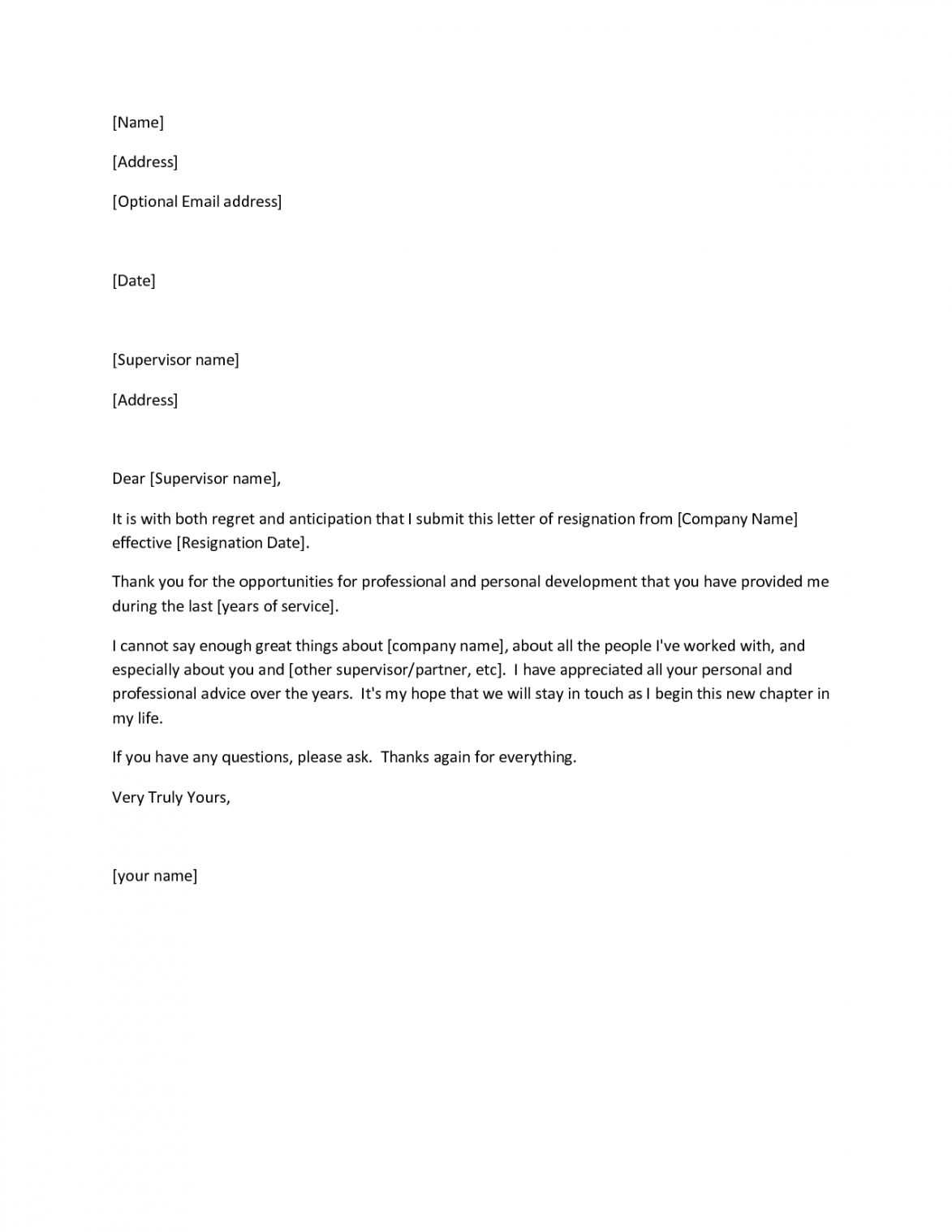
Provide a clear plan to assist with your transition. This could include training a replacement or documenting important procedures. Offering this support makes it easier for your employer to manage your departure smoothly.
Ensure that you give ample notice based on your contract, usually two weeks. Giving enough time allows the company to begin the process of finding your replacement without rush.
Be concise: Keep your resignation letter short and direct. Clearly state your decision to resign and include the date your resignation will be effective. Avoid lengthy explanations or unnecessary details.
Professional tone: Regardless of your reasons for leaving, maintain a respectful and professional tone. Thank your employer for the opportunities provided and express gratitude for your time with the company.
Details matter: If you’re willing, mention any key accomplishments or experiences you gained during your tenure. This can leave a positive impression and may help maintain professional relationships.
Avoid negativity: Refrain from airing grievances or criticizing the company, colleagues, or management. Keep the tone neutral and focused on your personal decision to move on.
Give notice: Always provide sufficient notice based on your contract. If possible, offer to assist with the transition to ensure a smooth handover of your responsibilities.
Keep it simple: Your resignation letter should follow a basic structure: a statement of resignation, the effective date, and a thank you message. Avoid going into unnecessary detail.